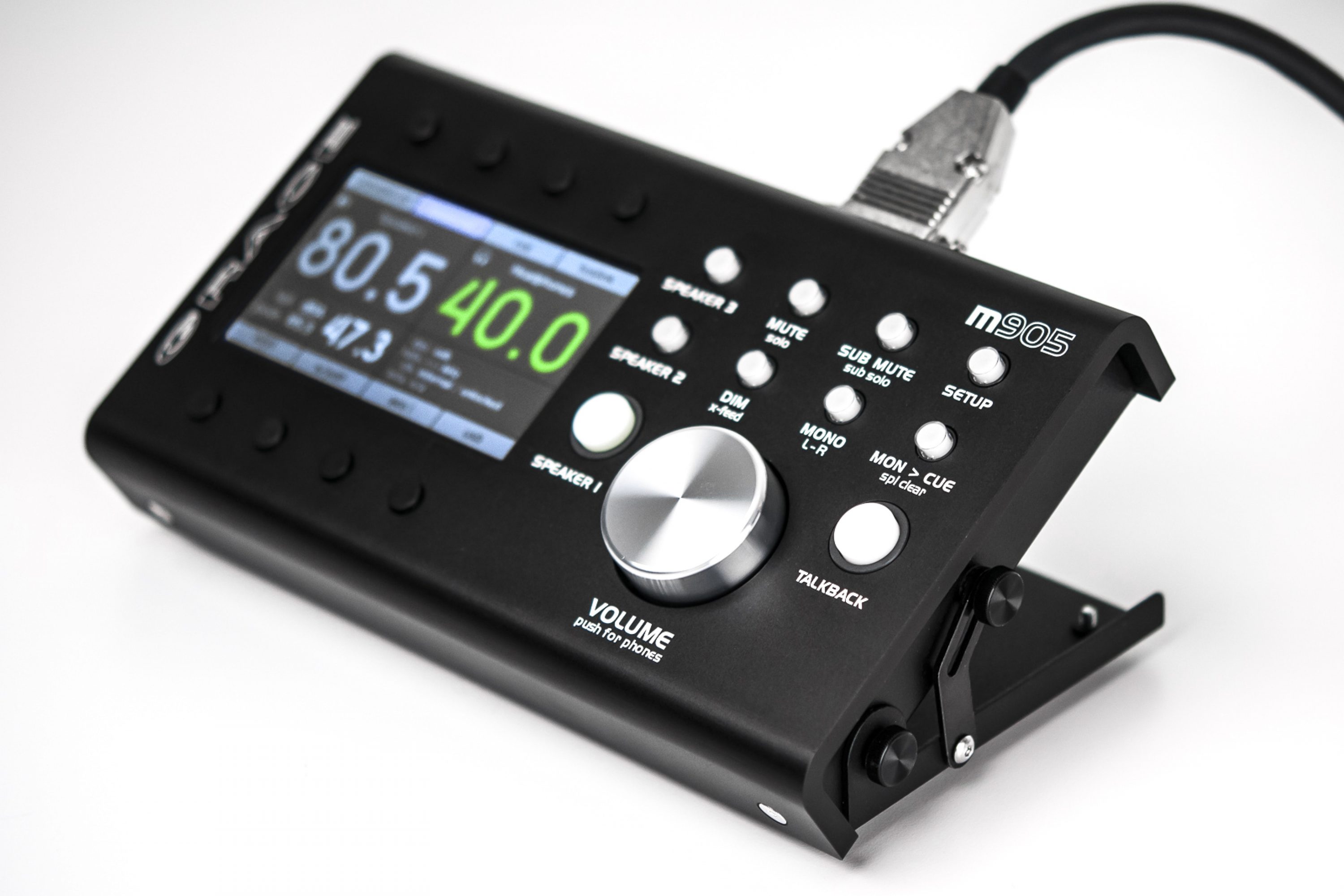
m905
Reference Stereo Monitor Controller
New Firmware supports Digital Speaker control via AES and S/PDIF outputs
New Firmware supports Digital Speaker control via AES and S/PDIF outputs
The is our second generation stereo monitor controller, engineered from the ground up to provide unrivaled sonic purity with a comprehensive and powerful feature set.
The m905 represents a new benchmark for audio playback quality. DAC performance is on par with the finest esoteric mastering equipment available. Our redesigned s-Lock™ PLL ensures ultra-low jitter clock regeneration. An asynchronous USB class 2 interface allows the m905 to act as the master clock of the computer’s USB audio buss, effectively eliminating interface induced jitter for computer audio playback. And finally, meticulous analog circuitry measures with outstanding numbers in dynamic range, distortion and noise performance, ensuring bracingly open, detailed and musical playback of any input source.
All main audio and power supply circuitry is housed in a 2U rack mount mainframe, while system control is managed by a sleek, ergonomic remote control unit. This new RCU is a combination of dedicated hardware and a color graphical LCD display. All primary monitoring features are accessed via hardware switches and a rotary encoder, while all system information is presented by the graphic LCD and illuminated switches. This hybrid design allows for the solid feel and function of traditional hardware with the added power and functionality of a graphical user interface.
Now supported is DSD 128x (5.6448MHz) via DoP v1.1 (DSD over PCM frames). DSD audio can be sourced from the AES3, S/PDIF or USB digital inputs. While still a niche playback format, DSD has held its ground over the years, and now more and more content is available via download. And playback is now supported by a number of players. DSD sounds stunningly natural, especially rendered through the rest of the playback circuitry of the m905. So If you’re the type to seek out this kind of fidelity, the m905 is a great way to enjoy it.
The GUI is designed so that any engineer unfamiliar with the m905 can use the system immediately and confidently. Then with a minimal time investment, advanced functions can be accessed and controlled with ease. Additional features include: naming individual inputs and speaker outputs, calibrating level offsets of any input and output, setting preset levels, and much more. The setup menus only ever drill down one level, so the main operating screen is always one button away. And when returning to any previously visited setup menu, its previous edit status is remembered, keeping redundant navigation and editing to a minimum.
The m905 offers the ability to transfer up to 10 channels of digital audio (8-channels of ADAT and two of AES3, or S/PDIF or TOSLINK) over USB to a computer, making the m905 capable of operating as a standalone USB audio interface. This is an advanced feature as there are clock issues to be aware of, but it works and is documented in the owners manual.
With stunning sonic performance and timeless design, the m905 is a mark of genuine progress in the pursuit of high quality audio production. Intuitive, reliable and beautiful, it is the perfect studio centerpiece – home base for your ears, eyes and hands.
m905 Analog Option (analog inputs only)
m905 Analog Option (analog inputs only)
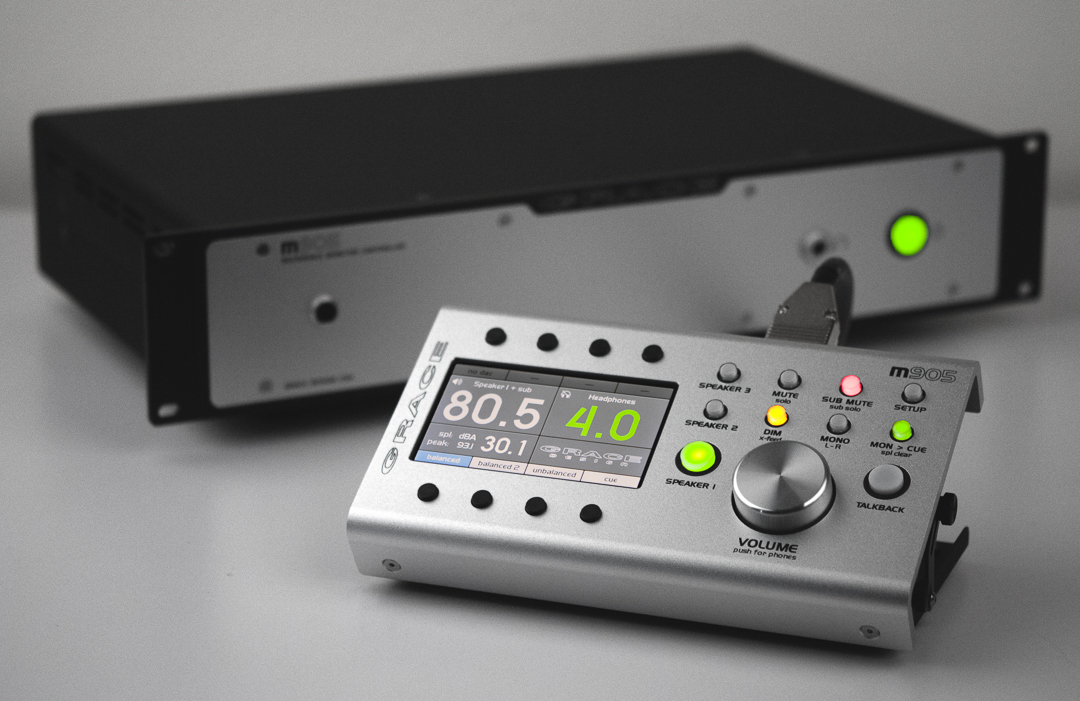
The m905 Analog is now available without the built in DAC. This system is offered for users who already have an investment in DACs, whether stand-alone or built into their interface. System configuration is exactly the same, with all the same great monitoring features, except no digital inputs and an second pair of balanced analog inputs. The m905 Analog brings this world class performance into reach of almost any engineer or recording studio. Also, users can always upgrade their m905 Analog to the Digital version at anytime. NOTE: the analog only version incudes a simplified remote cable that does not carry headphone signal to the RCU. To enable the headphone output on the RCU, ask your dealer to upgrade to the premium remote cable.
PHONO PREAMP OPTION
PHONO PREAMP OPTION
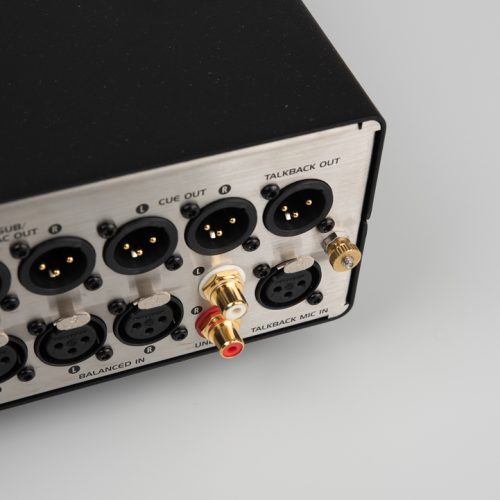
The m905 phono module is a high performance RIAA preamplifier. This option is available on new and existing units, the latter requires the unit to be returned to our factory to be upgraded. If you are an overseas customer, please contact your Grace Design distributor for details.
It can be optimized for a wide range of phono cartridges via a number of internal jumper settings. To access these jumpers, remove the top cover of the m905 and refer to the Jumper Location diagrams in chapter 18 of the Owner’s Manual.
INFRARED WIRELESS REMOTE OPTION
INFRARED WIRELESS REMOTE OPTION
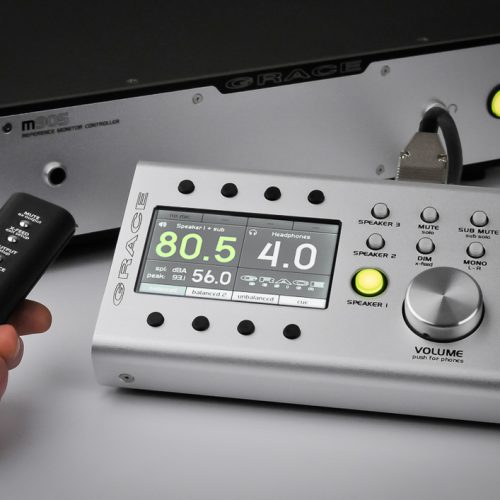
Also now available is the m905 IR Remote Option, which is available on new or existing units (Digital and Analog). This feature allows wireless infrared remote control of a select set of monitoring controls via a legacy Grace Design Remote (discontinued), a standard Apple Remote, or with iOS and Android via the Logitec® Harmony Remote.
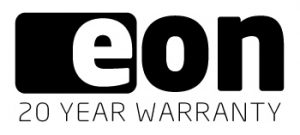
The Grace Design EON and STANDARD Warranties
We back up everything we make with either our unrivaled 20 year EON limited warranty, or the 5 year standard limited warranty. These represent the best coverage in the business and prove our commitment to the quality, serviceability and long term value of Grace Design products.
- Analog inputs – unbalanced (standard or the optional RIAA phono input), balanced (2nd pair balanced available on m905 Analog), CUE, talkback mic
- Digital inputs – 2x AES3 (Single or dual-wire), 1 S/PDIF, 1 TOSLINK, ADAT (selectable in 4 pairs, or 2 pairs in S/MUX), USB, DSD128 (5.6448MHz)
- Audio circuitry designed for completely transparent and musical playback performance
- Asynchronous Class 2 USB playback supports up to 24 bit/192kHz
- Mastering quality DAC circuitry with configurable de-emphasis filtering
- s-lock dual-stage Phase Lock Loop for ultra low jitter clock regeneration
- Hybrid RCU with hardware switches, large level encoder and graphical LCD
- LCD display shows input, level, output, SPL and DAC status plus a full calibration menu
- RCU includes built in microphone for talkback and onboard SPL meter
- SPL meter features include level, peak, fast and slow modes, A & C weighting
- Precision .5 dB step level control for speakers and headphones
- Reference headphone amplifier circuitry, with outputs on both the RCU and ACU
- Dedicated mono, dim, mute and sub mute switches
- Digital loop thru outputs that can be configured to pass incoming digital signals or as a digital speaker output when monitoring digital PCM sources
- Mono mode can be set to L+R summed, L only in both channels, or R only in both channels L solo, R solo, L-R and sub solo modes are available
- 3 available stereo speaker outputs, with two assignable mono sub outputs (or single stereo sub output)
- Multi-mode SUB/ DAC/ METER out
- SUB out mode for stereo or multiple mono subwoofer outputs
- DAC out mode for a fixed DAC output fed by the selected digital input
- METER out mode fed by selected input signal (digital or analog), configurable with a fixed level or to follow the monitor level
- Detachable RCU tilt base
Analong I/O
| THD+N at Maximum Volume, 1kHz, 22Hz-22kHz BW | |
|---|---|
| +20dBu out | <0.0008% |
| +10dBu out | <0.0008% |
| 0dBu out | <0.002% |
| Intermodulation Distortion SMTPE/DIN 4:1 50Hz, 7kHz | |
|---|---|
| @+20dBu out | <0.002% |
| @ 0dBu out | <0.0015% |
| Frequency Response | |
|---|---|
| Balanced Inputs +/-3dB | 3Hz to 1.25MHz |
| Unbalanced Input +/-3dB | 3Hz to 275kHz |
| Dynamic Range | |
|---|---|
| 20-22kHz bandwidth | 118 dB |
| 20-22kHz bandwidth and A weighting filter | 121 dB |
| Output Noise | |
|---|---|
| 20-22kHz bandwidth, at -20dB gain | -99 dBu |
| 20-22kHz bandwidth and A weighting filter, at -20dB Gain | -102 dBu |
| Phase Deviation | |
|---|---|
| 20Hz to 20kHz | <10 degrees |
| 10Hz to 100kHz | <19 degrees |
| Crosstalk Any Channel | |
|---|---|
| 100Hz | <104dB |
| 1kHz | <100dB |
| 20kHz | <79dB |
| Balanced Input CMRR | |
|---|---|
| 60Hz | <90dB |
| 1kHz | <85dB |
| 10kHz | <70dB |
| Gain Range | |
|---|---|
| -104dB to +13dB | |
| Channel Tracking Accuracy | |
|---|---|
| Any channel | +/-0.1dB |
| Maximum Output Level | |
|---|---|
| +26dBu | |
| Maximum Input Level | |
|---|---|
| Balanced Inputs | +29dBu |
| Unbalanced Inputs | +21dBu |
| Impedances | |
|---|---|
| Balanced Inputs | 88k Ohms |
| Unbalanced Inputs | 53k Ohms |
| Balanced Outputs | 300 Ohms |
| Minimum load impedance | 300 Ohms |
| External Talkback Mic Preamp Gain | |
|---|---|
| +7dB to +70dB in 1dB steps | |
Optional Phono Preamp Module
| 40dB | |
|---|---|
| Gain @1kHz | 40dB |
| Noise 22Hz-22kHz | -90dBu |
| Noise A-weighted | -96dBu |
| %THD+N 1kHz, 5mV IN | <0.0080% |
| %THD+N 1kHz, 1mV IN | |
| %SMPTE/DIN 4:1 100/2kHz | <0.004% |
| Max Input Level 0.1% THD+N | 110mV |
| Sub Sonic Filter -3dB | 12Hz |
| RIAA EQ accuracy | ±0.10dB |
| 60dB | |
|---|---|
| Gain @1kHz | 60dB |
| Noise 22Hz-22kHz | -71dBu |
| Noise A-weighted | -76dBu |
| %THD+N 1kHz, 5mV IN | |
| %THD+N 1kHz, 1mV IN | <0.04% |
| %SMPTE/DIN 4:1 100/2kHz | <0.003% |
| Max Input Level 0.1% THD+N | 10mV |
| Sub Sonic Filter -3dB | 12Hz |
| RIAA EQ accuracy | |
Digital To Analog Converter Fixed Outputs
| Output Levels | |
|---|---|
| User selectable (0dBFS) | -76dBu to +24dBu in 0.5dB steps |
| Fixed output trim range (0.5dB steps) | |
| THD+N | |
|---|---|
| 1kHz, -1dBFS, (0dBFS = +20dBu), 20-22kHz bandwidth | 0.0006% |
| Dynamic Range | |
|---|---|
| 20-22kHz bandwidth, 0dBFS = +20dBu (AES17 filter) | 117dB |
| 20-22kHz bandwidth, 0dBFS = +20dBu (A-weighted) | 119dB |
| Input Lock Range | |
|---|---|
| AES3/SPDIF | 44.1kHz +/-400Hz |
| 48kHz +/-700Hz | |
| 88.2kHz +/-1200Hz | |
| 96kHz +/-1300Hz | |
| 176.4kHz +/-2000Hz | |
| 192kHz +/-2000Hz | |
| TOSLINK | 44.1kHz +/-400Hz |
| 48kHz +/-700Hz | |
| 88.2kHz +/-1200Hz | |
| 96kHz +/-1300Hz | |
| ADAT LIGHTPIPE™ | 44.1kHz +/-50Hz |
| 8 Channels at 44.1kHz and 48kHz | 48kHz +/-70Hz |
| 4 Channels at 88.2kHz and 96kHz (s/mux) | 88.2kHz +/-50Hz |
| 96kHz +/-70Hz | |
| USB Supported Sample Rates | 44.1, 48, 88.2, 96, 176.4, 192kHz, DSD64 2.8224MHz, DSD128 5.6448MHz |
| s-Lock™ Capture Range | |
|---|---|
| 44.1kHz | +/- 6Hz |
| 48kHz | +/- 7Hz |
| 88.2kHz | +/- 14Hz |
| 96kHz | +/- 20Hz |
| 176.4kHz | +/- 24Hz |
| 192kHz | +/- 30Hz |
| Word Clock / Superclock Input | |
|---|---|
| Impedance (switchable) | 75 ohm / 1Meg ohm |
| Minimum Voltage | 3V peak to peak |
| Maximum Voltage | 5V peak to peak |
| Word clock frequencies supported | 44.1, 48, 88.2, 96, 176.4, 192kHz |
| Superclock frequencies supported | n/a |
Power Supply / General
| Power consumption | 60W |
| Input Voltage 50-60Hz | 100VAC – 240VAC |
| Dimensions | |
|---|---|
| Main chassis IEC 2U | 3.5″ x 10.5″ x 17″ |
| Remote control unit | 8.9″ x 5.1″ x 2.2″ |
| Weight | |
|---|---|
| Main chassis | 7.8lbs |
| Remote control unit | 2.2lbs |
Asynchronous Audio
The asynchronous mode USB converter in the m905 represents significant improvement over any previous type of USB DAC. Previously, a USB DAC worked under standard adaptive mode USB audio, which means the DAC’s clock would have to sync to the non-audio related computer USB buss master clock. As you can imagine, the computer has a lot else to do, so the incoming clock signal to which the DAC’s clock would have to sync was not ideal and would result in unwanted jitter.
With asynchronous mode USB, the m905’s USB DAC becomes the master to which the computer’s USB buss gets synced. So the computer is now synced to a crystal-based audio clock signal and the systems works with dramatically lower jitter. No phase-lock loop or sample rate conversion necessary, which means bit-perfect playback from a computer with zero interface-induced jitter.
Computer Audio Requirements
Regardless of the type of computer you will use to playback audio from, it must have at least one available USB port. The m905 ships with a standard USB type A to type B cable. The type A connector plugs in to the computer and the type B connector to the USB m905 input.
The m905’s asynchronous mode USB DAC supports standard driverless operation on MAC to 192kHz and on PC to 96kHz. For sampling rates above 96kHz, PC users will need to download and install a free driver on their computer. This driver can be found on our website – http://www.gracedesign.com/support/support.htm
Driverless operation basically means ‘plug and play’. The m905 will automatically show up in your computer’s list of supported audio devices as ‘Grace Audio Device’. In most cases, simply choose that as your audio playback device and the system will work.
Different operating systems may pose their own set of complications in setting up the m905 as the audio playback device. In the event that ‘plug and play’ operation does not occur, you will need to look at some specific setup variables for your OS. In this case, we will direct you to a very well written and comprehensive document by our friend and colleague Charlie Hanson from Ayre Acoustics. http://www.ayre.com/USB.htm. This is an invaluable resource for computer/USB audio setup information for most all current operating systems, and we strongly urge you to familiarize yourself with the information pertaining to your specific OS.
Another excellent resource is Wavelength Audio’s website: http://www.USBdacs.com
In the event that you have any setup issues which aren’t addressed by these resources, feel from to contact us directly at 303.443.7454 Monday through Friday 9 – 5, MST.
Using the m905 for DAW playback
With the extremely high quality audio playback achieved with this USB interface, the m905 can be great option as an stereo output device directly from your digital audio workstation. For playback only, this will work very well. However, using it in conjunction with other USB audio devices connected to your workstation computer’s USB will require some adjustments to your computers audio settings and for best results, some external clock routing between audio devices.
For Mac OS X, this is achieved by setting up the m905 in an ‘aggregate audio device’ setup, with the m905 as the output device. For Win 98 – Win 7, you must use ‘asio4all’ drivers- http://www.asio4all.com/. There is currently no support yet for windows 8.
With both of these setups, if you are using multiple I/O devices, you will need to pay careful attention to clocking. In Mac / Core audio aggregate setups, you are able to set which device is the clock master. However, this means that other devices will be sample rate converted, which we do not recommend.
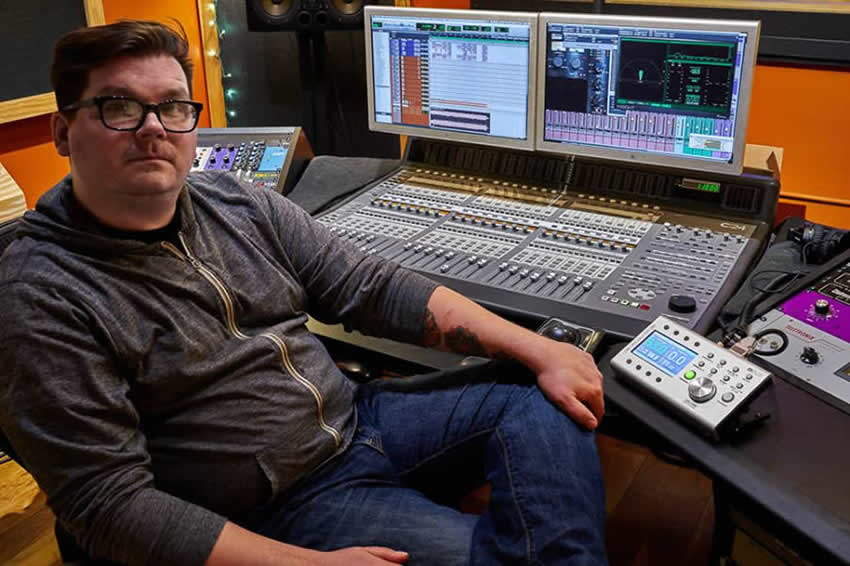
Jonathan Wyman is a producer/mixer/engineer based out of Portland, Maine. For a number of years, the m904B was at the heart of his monitoring system. Recently, he retired that unit in his A room and installed a new m905. Here’s what he had to say about the new rig:
“The monitoring in a studio informs every decision I make, so it’s been a priority for me to have the most accurate chain possible. I need the flexibility to be able to compare various sources: my mix, the rough mix, commercial references, even something my client wants to play me on their iPhone. Finally, it has to be musical, so I don’t hate the entire world at the end of a long day.
“The m904B was a game changer when I got it nine years ago, and the m905 is a step up that is not subtle at all. Improved ergonomics on the remote, built in SPL metering, and super flexible calibration have made a positive difference in my daily workflow. The sub mute is cool for visiting engineers who may not be used to the 2.1 setup, and the third set of speaker outputs make it a breeze if a visiting engineer wants to use their own speakers.
“But the biggest difference is the sound of the unit. The imaging is really detailed, and the speakers just kind of go away. The DAC sounds awesome, and it’s great to have a common converter to compare all my digital sources. It’s super musical and pleasant to listen to when things are right, but it’s not shy at all about showing me where things are wrong. It was immediately an improvement over the already great sounding m904B (which is still going strong in our B room – testament to how well these things are built!).
“My m905 helps me to instinctively make quick, confident decisions about my work. I absolutely love it.”




